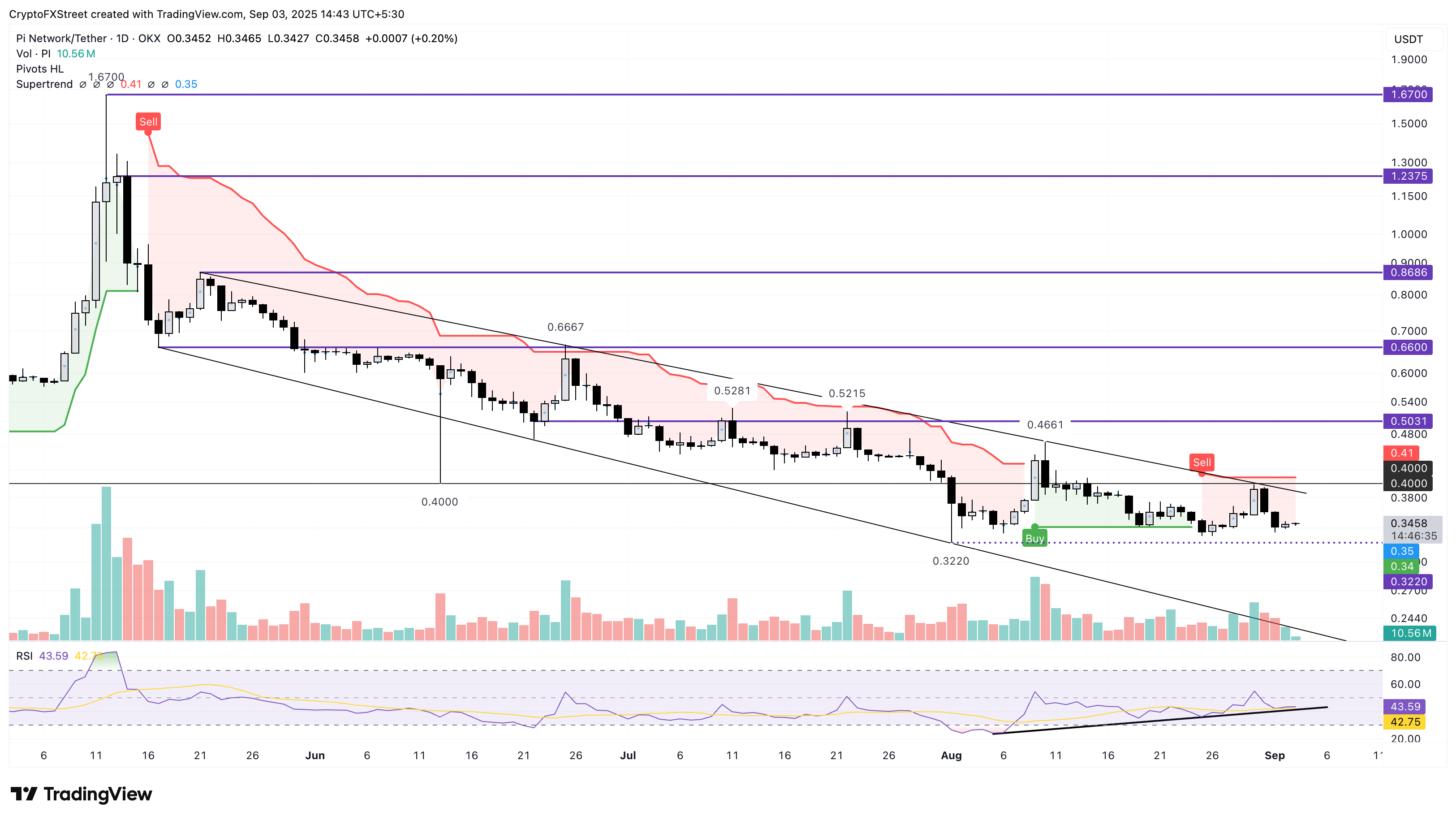Pi Network Price Forecast: PI holds at key support amid Stellar's Protocol 23 vote
- Pi Network holds above a crucial support level, surviving the bearish start to the week.
- Validators on the Stellar network will vote on Protocol 23, named Whisk, which could boost the Pi ecosystem.
- Onramp Money urges users to use the Mainnet wallet address after officially announcing the integration of the PI token.
Pi Network (PI) trades above $0.3400 at press time on Wednesday, extending the 1.23% rise from the previous day. The upcoming vote on Stellar’s Protocol 23, called Whisk, could renew interest in Pi Network and boost the Pi ecosystem. Parallel to technical overhauls, Onramp Money officially announced PI token integration on Monday.
Pi Network’s technical upgrade amid Onramp integration
Pi Network, built on a modified Stellar protocol, prepares for the upcoming Stellar Protocol 23 upgrade, which will be voted on Wednesday at 17:00 GMT. The upgrade will drive blockchain development with key enhancements, including unified events and parallel transactions.
Pi Network announced that the custom Pi Protocol will pull upgrades from the new and improved Stellar rollout on the launch of Pi Node’s Linux version to boost the development process on the Pi ecosystem.
Pi Network will roll out two testnets before pushing the upgrade to the mainnet and has shared the possibility of planned outages, if required. Furthermore, the Know Your Customer (KYC) process required for Pi users, commonly referred to as Pioneers, to join the mainnet could achieve decentralization as the upgrade allows the Pi KYC solution authority transfer to other entities.
Parallel to the technical overhaul, Onramp Money announced PI token integration on Monday. The on-ramp protocol has urged users to ensure the Pi Network mainnet wallet address instead of the testnet address, making the service exclusive for the KYC-verified addresses.
Pi Network holds at crucial support
Pi Network holds above $0.3400, securing the gains from Tuesday. The largest KYC-based crypto project prevails a path of least resistance on the downside, risking the $0.3220 support, marked by the record low on August 1.
Still, the steady uptrend in the Relative Strength Index (RSI) reaching 43, indicates a bullish divergence with the price action taking multiple support from the area above $0.3220.
To reinforce an uptrend, the Supertrend indicator warrants a decisive close above its red line at $0.4100. This would mark a clear breakout from the falling channel pattern on the daily chart, which has remained intact from May.

PI/USDT daily price chart.
On the contrary, a drop below the $0.3220 level could extend the decline in PI towards the $0.3000 round figure.
Bitcoin, altcoins, stablecoins FAQs
Bitcoin is the largest cryptocurrency by market capitalization, a virtual currency designed to serve as money. This form of payment cannot be controlled by any one person, group, or entity, which eliminates the need for third-party participation during financial transactions.
Altcoins are any cryptocurrency apart from Bitcoin, but some also regard Ethereum as a non-altcoin because it is from these two cryptocurrencies that forking happens. If this is true, then Litecoin is the first altcoin, forked from the Bitcoin protocol and, therefore, an “improved” version of it.
Stablecoins are cryptocurrencies designed to have a stable price, with their value backed by a reserve of the asset it represents. To achieve this, the value of any one stablecoin is pegged to a commodity or financial instrument, such as the US Dollar (USD), with its supply regulated by an algorithm or demand. The main goal of stablecoins is to provide an on/off-ramp for investors willing to trade and invest in cryptocurrencies. Stablecoins also allow investors to store value since cryptocurrencies, in general, are subject to volatility.
Bitcoin dominance is the ratio of Bitcoin's market capitalization to the total market capitalization of all cryptocurrencies combined. It provides a clear picture of Bitcoin’s interest among investors. A high BTC dominance typically happens before and during a bull run, in which investors resort to investing in relatively stable and high market capitalization cryptocurrency like Bitcoin. A drop in BTC dominance usually means that investors are moving their capital and/or profits to altcoins in a quest for higher returns, which usually triggers an explosion of altcoin rallies.



